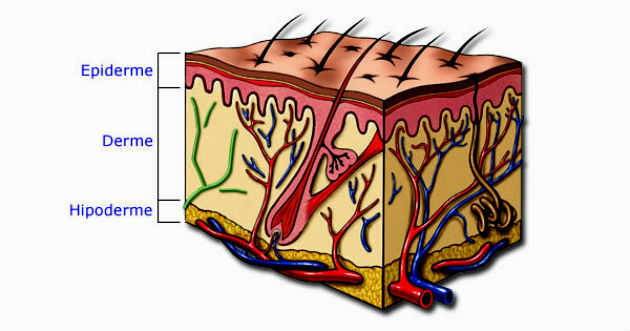THE systole and the diastole represent two important moments in the cardiac cycle, which is the outflow and inflow of blood into the heart. They represent the contraction and relaxation of the heart.
In the cardiac cycle, beats are produced, with the first beat corresponding to systole and the second marking the beginning of diastole.
Difference between systole and diastole

Systole and diastole are two fundamental events in the cardiac cycle. Find out below the difference between them.
Systole
Systole is the contraction of the heart muscle that results from the emptying of the ventricles, that is, when the blood comes out of the vases. At this time, the passage of blood to the artery pulmonary and aorta, from the opening of the semilunar valves.
The main function of systole is to pump blood when the heart is contracted so that it passes from the aorta to the pulmonary artery.

At the time of heart contraction, ventricular and atrial systole occurs, which are divided into the following phases:
- isovolumetric contraction: is the initial moment of ventricular contraction, resulting in increased atrial pressure and closure of atrioventricular valves. Ventricular volume is constant in this phase as the semilunar valves are still closed.
- fast ventricular ejection: consists of the moment when the semilunar valves open, causing an increase in ventricular pressure. This is when blood is abruptly ejected from the ventricles.
- slow ventricular ejection: this is when blood starts to be ejected, thus decreasing the volume of blood flow.
Diastole
Diastole corresponds to the relaxation of the heart muscle, which is when the heart it has a lower internal pressure for the ventricles to receive blood from the pulmonary veins and vena cava. That's when blood enters the heart.

In cardiac muscle relaxation, ventricular and atrial diastole occurs, which are divided into the following phases:
- isovolumetric ventricular relaxation: is the initial movement, where the semilunar valves close and extend to the opening of the atrioventricular valves.
- Rapid ventricular filling phase: this is when the blood drains through the ventricular chambers. At this stage, the blood that was trapped in the atria reaches the ventricles very quickly.
- Slow ventricular filling phase: this is the moment when the filling velocity decreases, thus increasing the pressure inside the ventricles.
- atrial contraction phase: in this phase, there is a reinforcement in the ventricular filling, causing the volume of the ventricles to increase approximately 25% and increase the diastolic pressure.
Blood pressure
Blood pressure is measured in millimeters of mercury (mmHg) and is related to the two moments of the cardiac cycle, being given in two numbers. That's why it's common for doctors to say that the ideal pressure should be "12 to 8"
Systolic pressure is always the highest number, as this is when the heart exerts its maximum pressure at the time of contraction. Diastolic pressure has a lower number because it represents the resting time of the heart.
Blood pressure varies according to age group. A normal adult, without indications of heart disease, should have a systolic pressure of 120 mmHg and diastolic pressure of 80 mmHg. In a child, the systolic pressure should be 100 mmHg and the diastolic 65 mmHg.
Hypertension
To identify the hypertension, consider the values presented in the table below:
| Category | systolic pressure | diastolic pressure | |
|---|---|---|---|
| Normal | Less than 120 | and | Less than 80 |
| high | 120 - 129 | and | Less than 80 |
| stage 1 hypertension | 130 - 139 | or | 80 - 90 |
| stage 2 hypertension | 140 or greater | or | 90 or greater |
| hypertensive crisis | 180 or greater | and/or | Greater than 120 |
hypotension
Blood pressure lower than recommended (12 out of 8) is only considered hypotension if you have any symptoms.
In general, low blood pressure is characterized when it presents less than 90 mmHg of systolic pressure and 60 mmHg of diastolic pressure, which would correspond to 9 out of 6.
Read too:
- System cardiovascular
- System circulatory
- muscular system
- Muscle tissue
- Myocardium



